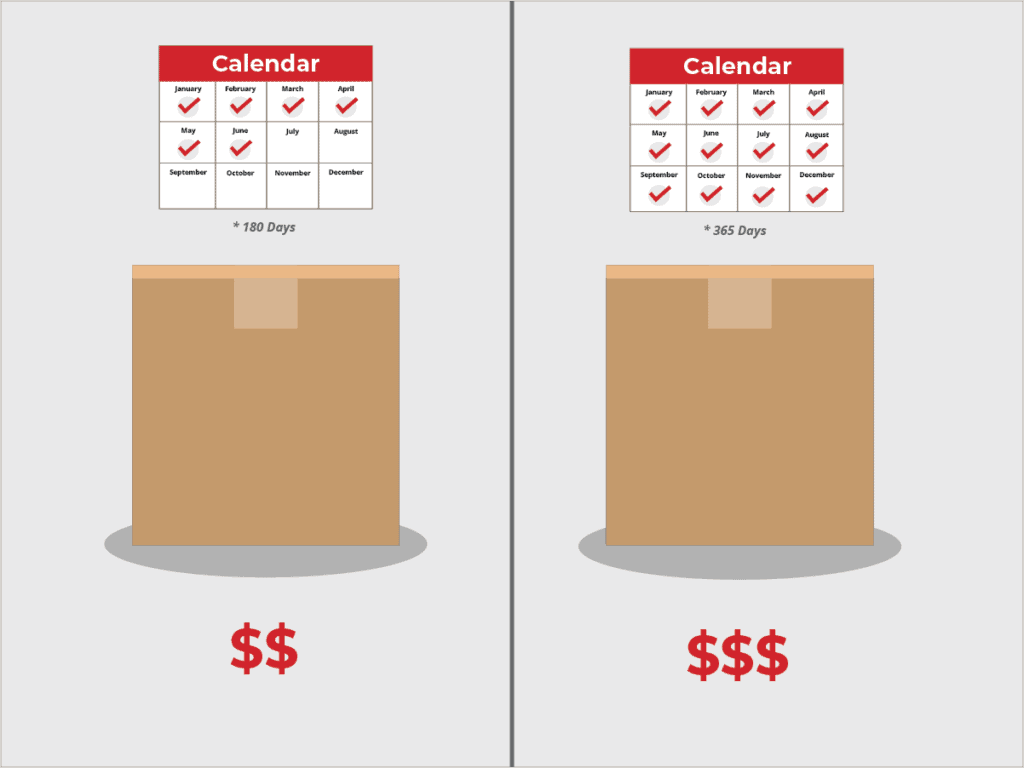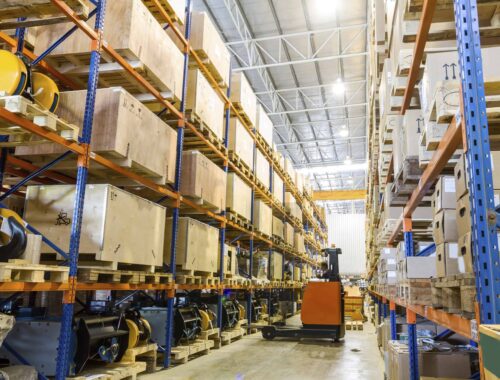The combination of COVID-19 and supply chain backlogs has been a complicated challenge for many eCommerce companies to overcome. From running out of product to overstocking warehouse shelves, eCommerce entrepreneurs have had to pivot quickly and often over the last two years to keep customers satisfied — which has ultimately resulted in overcorrections as the pendulum continues to swing wildly. Increasingly, a market shift focused on maintaining adequate levels of safety stock, rather than just in time (JIT) methods, has driven more inventory onto the shelves of warehouses. And, with more and more companies keeping extra product on the shelves to avoid stockouts, warehouse space is at a premium — and that is leading 3PLs to reassess the cost of storing products and, in some cases, institute long-term storage policies.

As we all wait for the pendulum to rest and our industry to normalize, the reality is that warehouse space on U.S. soil has become extremely limited, and 3PLs don’t have any viable short-term fixes. After all, building new warehouses takes time — time that eCommerce companies looking to keep an ample amount of stock simply don’t have. Additionally, warehouse leases are long-term; at least, the fiscally responsible ones are.
3PLs are highly capital intensive, and, unlike traditional warehouse service providers, are focused on moving product quickly, not simply storing it. Fulfillment providers are only successful when they are doing exactly what the name suggests: fulfilling orders for eCommerce businesses. While a warehouse service provider is designed for long-term storage, 3PLs and logistics partners must find ways to cover the additional overhead of slow-moving inventory. Fulfillment providers’ storage models must evolve to align with the reality of supply chain backlogs, long-term leases, and additional inventory.
It’s because of this that many 3PLs add additional fees to any product that doesn’t move or stays on the shelves long-term. Thus, long-term storage was born as a way for fulfillment companies to incentivize eCommerce owners to keep intelligent and optimized levels of inventory that won’t sit idly on shelves for months at a time.
In short, this model is simply taking what would be the fixed cost of storage for an eCommerce business and making it variable, thus incentivizing business owners to push slow-moving inventory and keep products moving swiftly.
Defining long-term storage
Long-term storage is a classification for inventory storage that sits on warehouse shelves without selling for an extended period — the actual length of which is defined by the 3PL and can, therefore, vary. In many cases, a fulfillment provider will consider inventory that’s been sitting on the shelves for more than 180 or 365 days as “slow-moving” and add additional fees at each of those marks as a way to recoup the cost of that product taking up shelf space. After all, as previously mentioned, fulfillment providers are not solely in the business of providing warehouse services — they need inventory to turn to be successful.
But this isn’t a new concept — 3PLs and logistics partners are in the business of helping your eCommerce products get to the right customer quickly and accurately. They are built to help you sell your products, and inventory that doesn’t sell quickly only hurts both your business and the fulfillment provider in the long run. Because of this, it’s essential to review your products and inventory levels often and audit slow-moving inventory regularly.

Overall, now is the optimal time to review your SKUs in storage, reassess historic inventory data, and determine whether your stock levels are truly at appropriate “safety stock” levels or if you’re possibly overcorrecting from the rapid pendulum swing that came with COVID-19 and the subsequent supply chain backlogs. Remember, the industry will normalize, but in the meantime, 3PLs are having to pivot and adjust just as quickly as you and your businesses do.
Changes in everything from inbound freight to storage policies are simply part of those pivots, because, like you, fulfillment providers are riding the waves of these unprecedented 24 months and waiting for the seas to calm again. So, keep track of your inventory, audit any products that aren’t moving as quickly as you’d predicted, and talk to your 3PL about how to keep your merchandise flowing through your fulfillment partner’s warehouse and into customers’ hands smoothly and efficiently.











